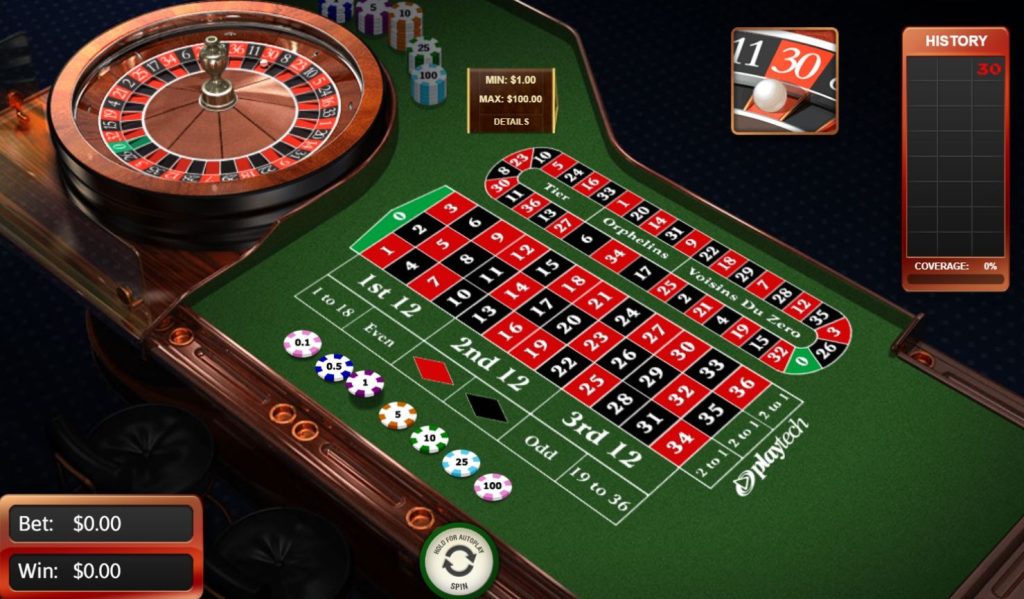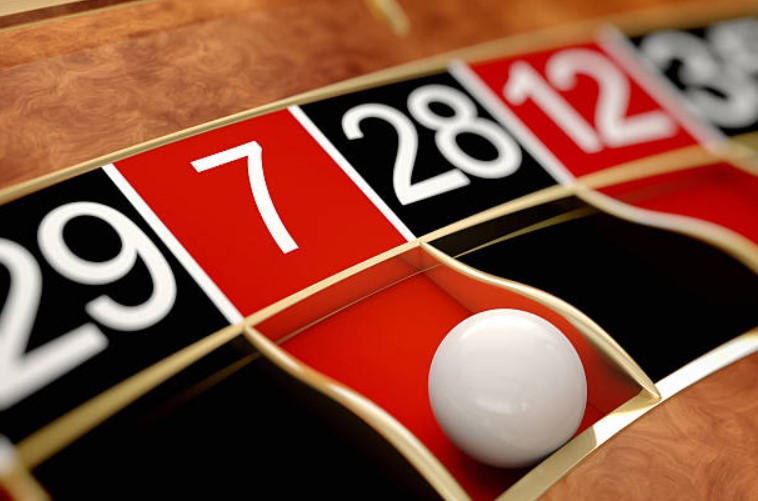La ruleta, con su icónica rueda giratoria y su aire de sofisticación, ha cautivado a los jugadores durante siglos. Diseñada como una combinación de azar, estrategia y emoción,
la ruleta ofrece a los jugadores una experiencia de casino única . Ya sea que estés parado en la barandilla de un casino bullicioso o jugando desde la comodidad de tu hogar en línea, la emoción de adivinar dónde caerá la bola sigue siendo incomparable. Esta guía de la ruleta está diseñada para aquellos que son nuevos en el juego y proporciona un desglose completo de cómo jugar a la ruleta para principiantes. Desde la comprensión de las reglas básicas de la ruleta hasta la exploración de los diversos sistemas y estrategias de apuestas, esta guía tiene como objetivo brindarte el conocimiento que necesitas para acercarte a la mesa de la ruleta con confianza y una apreciación más profunda de los matices del juego. Sumerjámonos en el mundo de la ruleta, donde cada giro trae consigo la oportunidad de nuevos comienzos y posibles ganancias.
Reglas básicas para jugar a la ruleta
Para embarcarse en la aventura de la ruleta, hay que empezar por comprender sus elementos esenciales, algo crucial para quienes recién comienzan y desean aprender a jugar a la ruleta para principiantes. En el corazón de este venerable juego de casino se encuentra una rueda que gira con gran vibración acompañada de una pequeña bola que se lanza. Los participantes hacen sus apuestas en el lugar donde especulan que se asentará la bola una vez que la rueda se detenga. La rueda en sí está meticulosamente organizada en casillas numeradas del 1 al 36, coloreadas alternativamente en rojo y negro, con una o dos casillas pintadas de verde para representar ceros. Las reglas básicas de la ruleta para principiantes ofrecen a los jugadores una amplia gama de opciones de apuestas, lo que les permite realizar apuestas en un número específico, el color de una casilla o la paridad (par o impar) del número.
El camino hacia el dominio de la ruleta se allana a medida que los jugadores se familiarizan con el diseño de la mesa de la ruleta, un reflejo directo de la estructura de la rueda. Este conocimiento es fundamental para quienes dominan las reglas de la ruleta para principiantes. La mesa se divide en dos zonas principales para apostar: la interior y la exterior. La zona interior ofrece apuestas a números específicos directamente, lo que produce pagos más altos debido a la menor probabilidad de ganar. Por el contrario, la zona exterior brinda oportunidades de apostar a categorías más amplias de números o características como el color, la paridad y el rango (ya sea alto de 19 a 36 o bajo de 1 a 18). Al colocar sus fichas en las partes designadas de la mesa correspondientes a sus apuestas, los jugadores cumplen con las reglas básicas de la ruleta, navegando hábilmente por las complejidades del juego con apuestas estratégicas.

Tipos de ruleta
Una mejor comprensión de las sutilezas de la ruleta surge de la distinción entre sus dos variantes principales: la americana y la europea. Esta distinción es crucial para los principiantes que aprenden a jugar a la ruleta europea, ya que afecta significativamente tanto a la estrategia como a las probabilidades del juego. La versión americana presenta una rueda configurada con 38 ranuras , que comprende los números del 1 al 36, un solo cero y un doble cero adicional, lo que aumenta la ventaja de la casa e intensifica el desafío del juego. Alternativamente, la versión europea presenta un diseño más propicio para el jugador con 37 ranuras al omitir el doble cero, predominante en su contraparte americana.
Para quienes quieran aprender a jugar a la ruleta europea, es fundamental entender que esta versión no solo reduce la ventaja de la casa, sino que también aumenta la probabilidad de que el jugador gane, lo que la convierte en una opción atractiva para quienes se centran en dominar cómo jugar a la ruleta y ganar. La guía de la ruleta sugiere de forma habitual que los principiantes opten por la versión europea, ya que simplifica el juego y cambia gradualmente las probabilidades a su favor. Este enfoque fundamental no se trata simplemente de aprender el juego, sino de maniobrar estratégicamente entre sus probabilidades para optimizar el disfrute y las posibles ganancias.
Zonas de apuestas (internas y externas)
Comprender las zonas de apuestas en la ruleta es fundamental para los principiantes que buscan comprender las reglas básicas de la ruleta. La mesa de la ruleta se divide en dos áreas clave conocidas como zona interna y zona externa, cada una de las cuales ofrece diferentes tipos de apuestas. La zona interna, o apuestas internas, es para apostar a números específicos o pequeñas combinaciones de números. Estas apuestas se colocan directamente en los números mismos o en las líneas entre los números en el tablero. Las apuestas internas generalmente son de alto riesgo, pero vienen con grandes recompensas, lo que atrae a quienes disfrutan de la emoción de los pagos potencialmente grandes.
Las apuestas externas, o apuestas exteriores, ofrecen una gama más amplia de opciones de apuestas que cubren secciones más grandes de la ruleta. Se colocan en áreas designadas de la mesa que representan grupos de números o características específicas, como el color (rojo o negro), si un número es par o impar, o si se encuentra en un rango determinado (bajo 1-18 o alto 19-36). Estas apuestas ofrecen pagos más bajos que las apuestas internas, pero tienen una mayor probabilidad de ganar, lo que las hace ideales para la ruleta para principiantes que pueden preferir ganancias más frecuentes y más pequeñas para aumentar de manera constante su bankroll.
Tipos de apuestas
En el juego de la ruleta, las apuestas se pueden clasificar en dos tipos: apuestas internas y apuestas externas. Las apuestas internas se realizan en números específicos o grupos pequeños de números. Ofrecen pagos más altos debido a sus menores probabilidades de ganar. Los tipos de apuestas internas incluyen apuestas directas (apostar a un solo número), apuestas divididas (apostar a dos números adyacentes) y apuestas de calle (apostar a tres números consecutivos en una línea).
Las apuestas externas, por otro lado, cubren grupos más grandes de números y ofrecen mayores posibilidades de ganar, pero con pagos más pequeños. Estas incluyen apuestas sobre colores (rojo o negro), números pares o impares y agrupaciones numéricas más grandes, como docenas o columnas. Los consejos de ruleta para principiantes a menudo sugieren comenzar con apuestas externas, ya que son más fáciles de entender y brindan ganancias más frecuentes, lo que puede ser alentador para los nuevos jugadores.
Estrategias básicas de la ruleta
Desarrollar una estrategia básica de ruleta es una excelente manera de reducir las pérdidas y mejorar el disfrute del juego. Una técnica ampliamente conocida es el sistema Martingala, que implica duplicar la apuesta después de cada pérdida. Esta estrategia tiene como objetivo recuperar las pérdidas pasadas con una posible ganancia en futuras tiradas. Es especialmente preferida por aquellos que son nuevos en la ruleta para principiantes, ya que parece sencilla y promete una recuperación rápida. Sin embargo, la Martingala requiere un capital considerable para sostener las apuestas duplicadas, en particular durante una racha perdedora prolongada, y es más efectiva en apuestas externas de dinero parejo como rojo/negro o impar/par.
Otra parte integral de una estrategia básica de ruleta es el sistema D’Alembert, que ofrece una alternativa menos agresiva y más sostenible que la Martingala. En este sistema, los jugadores aumentan sus apuestas en una cantidad predeterminada después de una pérdida y las reducen en la misma cantidad después de una victoria. Esto conduce a una progresión más lenta en los tamaños de las apuestas, lo que hace que sea más fácil de administrar y menos riesgoso, lo que resulta atractivo para aquellos que buscan jugar a la ruleta y ganar con un estilo de apuestas más conservador. Adoptar estas estrategias es crucial para cualquier persona que se dedique a aprender la estrategia de la ruleta de manera efectiva, ya que proporciona un enfoque estructurado para administrar sus fondos y mejorar su comprensión del riesgo.

Sistemas de apuestas
Si se exploran más a fondo las estrategias de la ruleta, se revela una variedad de sistemas de apuestas complejos diseñados para optimizar las posibilidades del jugador. La secuencia de Fibonacci es uno de esos métodos sofisticados, en el que las apuestas se basan en los números progresivos de la serie de Fibonacci. Este sistema anima a los jugadores a aumentar sus apuestas según la secuencia después de una pérdida y a disminuirlas después de una victoria, equilibrando el riesgo a lo largo de más giros. Este enfoque más sutil de aumentar y disminuir las apuestas se destaca a menudo en los consejos avanzados de ruleta para principiantes, que promueven las apuestas disciplinadas y estratégicas.
El sistema Labouchere es otra estrategia para aprender a jugar a la ruleta que consiste en escribir una secuencia de números y apostar la suma del primer y el último número de cada ronda. Si la apuesta es exitosa, el jugador elimina los números utilizados de la lista; si la apuesta es perdida, la cantidad perdida se agrega al final de la secuencia. Esto continúa hasta que se eliminan todos los números o el jugador decide detenerse. El sistema Labouchere es un sistema flexible que permite a los jugadores ajustar sus tácticas de apuestas en función de su desempeño actual, lo que lo convierte en una forma dinámica e interesante de jugar a la ruleta.
Consejos generales
A medida que profundiza en cómo jugar a la ruleta y ganar, es fundamental reconocer la aleatoriedad inherente del juego. El consejo de ruleta más importante para principiantes es administrar sus finanzas con prudencia. Establecer un presupuesto antes de jugar y ceñirse a él puede evitar el error común de gastar de más debido a la naturaleza vertiginosa y emocionante del juego. Es fundamental jugar dentro de sus límites para mantener un disfrute saludable del juego.
Además, observar y aprender de jugadores más experimentados puede ofrecer información valiosa sobre los matices del juego. Este aprendizaje puede incluir apuestas estratégicas, control del ritmo del juego y comprensión de las probabilidades de la ruleta, lo que puede mejorar enormemente la experiencia de juego de un principiante. El disfrute siempre debe ser su objetivo principal. Concentrarse en divertirse y considerar las ganancias como un bono puede hacer que la explicación de la ruleta sea más satisfactoria. Participar en el juego de manera reflexiva y respetuosa reconoce su complejidad y mejora su interacción general con el entorno del casino.

